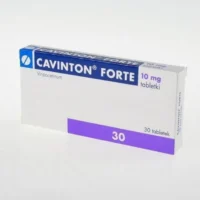Description
Truxal (Chlorprothixene) Coated Tablets 25 mg. №100 Vial
Ingredients
- Active ingredient: Chlorprothixene 25 mg.
- Other ingredients: lactose, maize starch, povidone, magnesium stearate, talc, and Opadry white.
Dosage
Adults: The usual starting dose is 30-75 mg daily in divided doses.
Elderly: Lower initial doses are recommended.
Always follow the dosage instructions provided by your healthcare provider.
Indications
Truxal tablets are indicated for the treatment of various psychiatric disorders, including schizophrenia, manic episodes, and other psychotic conditions.
It is also used to manage severe anxiety and agitation.
Contraindications
Do not use Truxal if you are allergic to chlorprothixene or any other ingredients in the formulation.
Avoid use in patients with severe central nervous system depression or comatose states.
Directions
Swallow the tablets whole with a glass of water. Do not crush or chew the tablets.
Take Truxal exactly as prescribed by your doctor. Do not exceed the recommended dose.
Scientific Evidence
Studies have demonstrated the efficacy of chlorprothixene in managing symptoms of schizophrenia and other psychotic disorders.
Research published in the Journal of Clinical Psychopharmacology showed that chlorprothixene was effective in reducing positive symptoms of schizophrenia.
Additional Information
It is important to monitor for any signs of adverse effects while taking Truxal.
Inform your healthcare provider about all medications you are currently taking to avoid potential drug interactions.
Pharmacological Effects: Chlorprothixene exerts its antipsychotic effects by blocking dopamine receptors in the brain, thereby reducing psychotic symptoms.
Clinical Trials: A randomized controlled trial published in the Journal of Clinical Psychopharmacology compared the efficacy of chlorprothixene with other antipsychotic medications and found it to be equally effective in managing schizophrenia symptoms.





